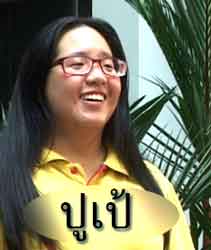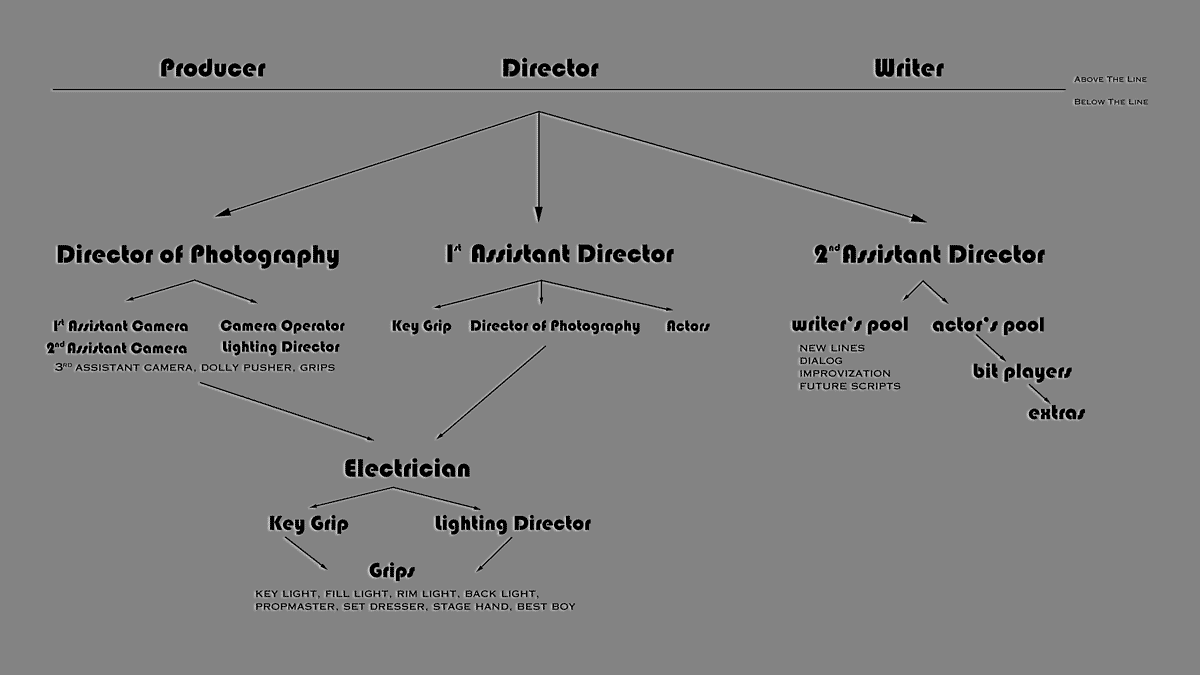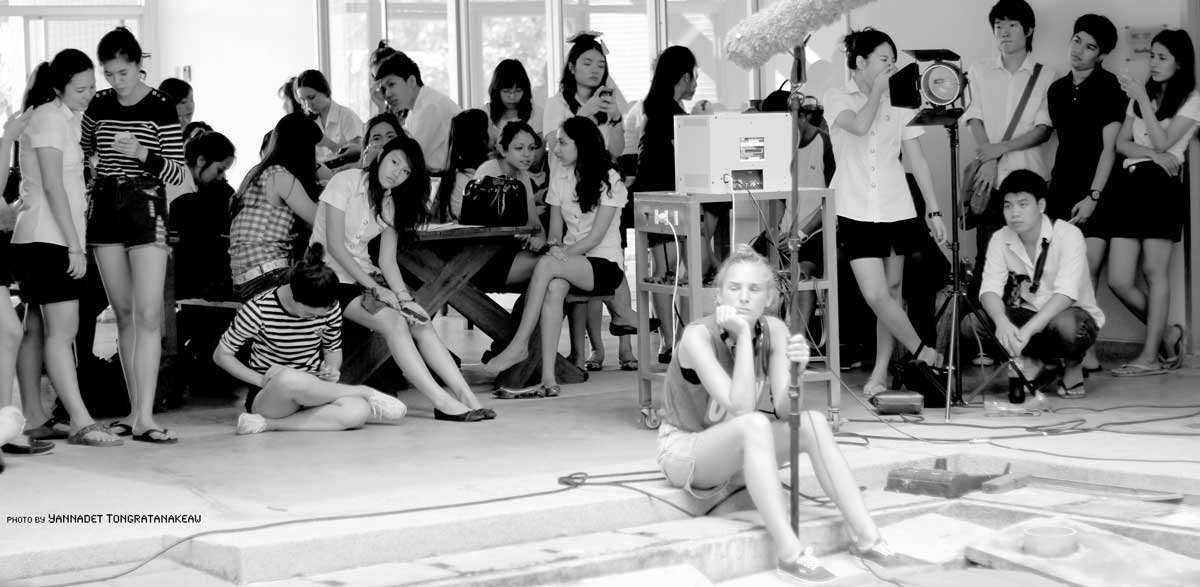Filmic VocabularyNovember 27, 2012Here are four different versions of Dit Tura, which we shot in class on November 19th. Below each version is a description of the
camera angle (function) and picture size. 

Extra Scripts for MondayNovember 11, 2012If you would like a chance to be an actress, especially if you haven't had one yet, memorize the lines from one of these scripts and we will shoot it in class. DailiesNovember 5, 2012I need the team list from the continity director. Waan, please send it to my email. And don't forget to put yourself on the list too. By the way, the second assistant camera forgot to give me the tape, again. It's okay, I went and got it myself. Have a good week, study hard, | ||||||||||||||
 |
 |
Draft #7, script update29 October 2012Here is the latest updated script. We will continue shooting on Monday, November the 5th. Don't miss it. Draft #6, script update28 October 2012Here is the latest updated script for Monday the 29th of October. Misunderstanding28 October 2012This was the one we shot in the rain on October the 15th. Script Update24 October 2012Here is an updated draft of the shooting script for Monday the 29th of October. Pump (Khun Surayuth) is the script supervisor so send any suggestions or additions to him. The paper size is F14 which is 216 x 357 millimeters. Sometimes scripts are printed on legal-size paper to help fit one minute of screen time per page of the story. Everyone is welcome to make additions or suggestions. The more people read this script and think deeply about it, the more we can do on the set. Just make sure that you actually read the whole thing (and consider it) before you make any sweeping changes. The idea is that everyone adds to it, not takes away from what's there unless it is just unbelievable or silly. เราสามคน22 October 2012Here is the updated script from today's shoot. Please feel free to copy it, make changes and send it back to me. My email is sam (at) samforkner.org. Even if your not in the crew or part of the cast, you can still help. In fact you can recieve extra credit, if you need it. Don't forget, anyone who brings me a ticket stub from the movie "Argo" will get five points added to their midterm grade. It's playing at Lido, Paragon, Major Bangkapi and a lot of other places. Check the times before you go. Also try to work on your paper. Reread what I posted on the blog and rewrite Paper Assignment 2. The due date is at the begining of class on 6 November. That's two weeks from today. It is okay to write in the first person for this assignment. Take One8 October 2012The original script is here. Writing Assignment 218 September 2012Use the methodoloy of the three act structure to write a short story. See the post below for a review of what I said in class. Your story may be as long or as short as you requre, but I am
suggesting around 500 words. That's not a lot of writing, so choose your words carefully. Write in easy, short sentences like we talked about in class. Here's an outline to get you started. Think for a while before you start writing for better results. Write down the answers to these questions on a seperate sheet of paper first. Then you can turn them into sentences in your story.
Please spend some time on this assignment, it will be an important grade for this class. After you have created your own outline, write your story. Let some time
go by and then read it again. Proof it and pollish it until there are no more grammatical errors. Remember all writing is rewriting. Short Stories18 September 2012In class I talked briefly about the three act structure.
This device only works if you have an interesting character. It's difficult to say what makes a character interesting, but here are some ideas:
There are many, many more possibilities. See how many you can think of. Act I, The Set-upThe main character must have a strong desire to achieve a certain goal. This is the main character's objective. This goal is the main driving force behind everything that he (or she) does. The
character's motivation for everything comes from this urgent need to complete his plan. It's the antagonist! Act II, ConfrontationThe antagonist is a person who stops the protagonist from reaching her (or his) objective. This character is easy to create and it will help define the main character. This makes the confrontation easier to write. It will also help you decide who will win. Thus making the resolution easier to write.
The antagonist can come in many forms. The easiest one is a bad guy with opposite goals from the protagonist. You can create a villain, if you wish, who simply hates the main character.
There are more complex ways to create an antagonist though. If your main character's goal is to reach the top of
Mount Everest, then exhaustion could be her obstacle. Or it could be nature, and the snow and wind are personified as the protagonist's enemy. Perhaps the
main character is fighting against herself, trying desperately not to commit some horrendous act. Regardless of whether the antagonist is a real person or
something abstract, it is this struggle against the main character which will drive your story forward and define the protagonist. Near the end of the second act, the main character must face something that makes her reach a point of no return. There must be some event that touches
the main character so deeply that she is permanently changed. And after this, you will know how to end your story. Act III, ResolutionAct three requires that you, the writer, make a choice. How will this conflict end? How you choose to end your story is entirely up to you. Here is an easy way to think about it. Choose an uplifting ending where everyone lives happily ever after, or a depressing one where everything gets as bad as it could possibly be. Either choice will push your story towards its conclusion.
The important sentences to write will be obvious by answering each of these questions. Write at least one sentence for each of these questions.
The Antihero17 September 2012Two main talking points about today's screening:
Experimental Film10 September 2012Here is the film "At Land" by Maya Deren, 1944. And here is "Un Chien Andalou" by Luis Bunuel. Un Chien means a dog. Andalou is the name of a town. It's a non-sensical title. You can read more about it here, Wild Analysis3 September 2012David Lynch is a writer/director who has written and directed some very famous movies, such as:
He is a director who is famous for his visual style which can be both exqusite and shockingly graphic. And the characters in his movies are always eccentric, neurotic or just plain crazy. The important characters for the movie we watched today are:
"Wild at Heart" was made in 1990 but it was made to seem like it took place about a decade or so earlier. The use of music jumps back and forth between Swing Jazz from the 40s and 50s, Heavy Metal from the 80s, and Rock 'n' Roll from the 60s. This movie also extensively makes reference to the Wizard of Oz (1939). Since David Lynch is a writer and director, we can understand his films from the characters he creates for the film and the world that these characters live in. One of the easiest ways to make sense of this bizare two hour feature is to follow the story of Lula. Everything bad seems to happen to her. Likewise the story revolves around her and her boyfriend, her father's murder, her mother's meddling, and so on. We Need to Talk About the Writing Assignment27 August 2012I showed the proper format for your papers in class. Make sure you follow it. Choose one of the following questions to write about.
Please make sure your work is 100% original. Anything copied from any website or other writing, even if only one sentence, will cause you to recieve an F. Drag Me to Class20 August 2012Analysis of the dramatic curve in the movie "Drag Me to Hell" (2009): click me! Kong on Paper16 August 2012Here is a link to a great website where I got the script for Peter Jackson's version of this classic film. But if you just want the PDF file you can click here. Remember that we started on p. 115 with EXT. BROADWAY - NIGHT. |
